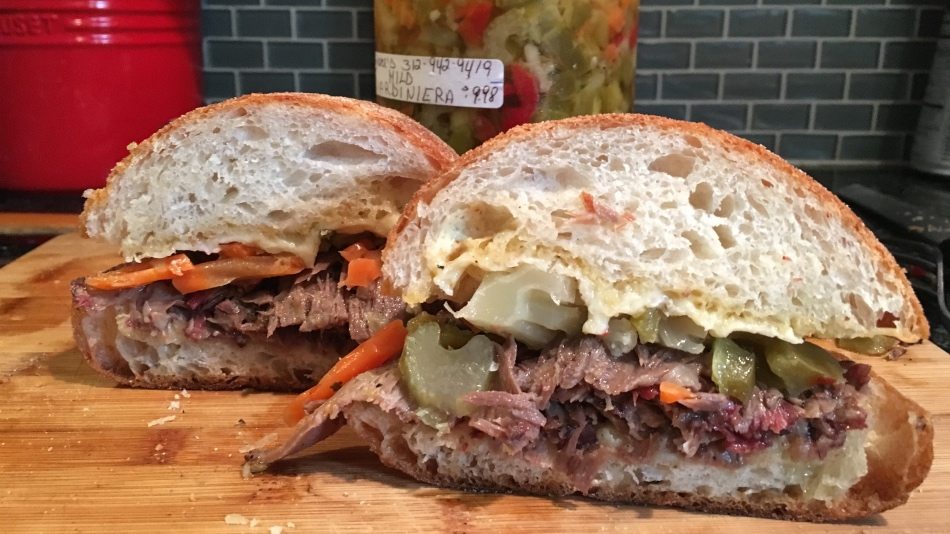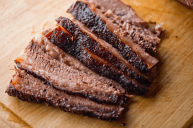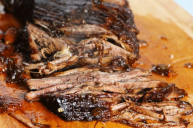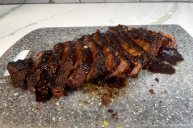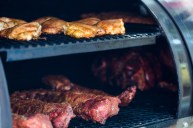A few months ago, I went out to my friend's farm and helped her open a commercial kitchen. "How should we handle payment," she asked me, "would you be okay with a trade scenario?" She owns an organic farm where she also raises sustainable beef and pork, so an emphatic reply of "yes!" was certainly in order. I bought a disposable cooler and packed up some choice cuts of meat. That's how I ended up with a beef chuck roll in the freezer.
Videos by Wide Open Country
I wasn't really sure what to do with it. It's not that there's anything wrong with a chuck eye roll, but there's nothing outstanding about it either. There are just more tender cuts of meat that get more attention than the beef chuck roast. Tender muscles are easy to cook - a quick flash sear on the grill and serve 'em up medium rare. But, tougher muscles require slow cooking under moist-heat.
Then, I came across an article in Texas Monthly that talked about smoking the chuck eye roasts, and I knew they were onto something. I immediately got to work smoking the roast. When I was done, I wondered if the smoked beef chuck roll wasn't the new brisket.
Brisket and Beef Chuck Roll
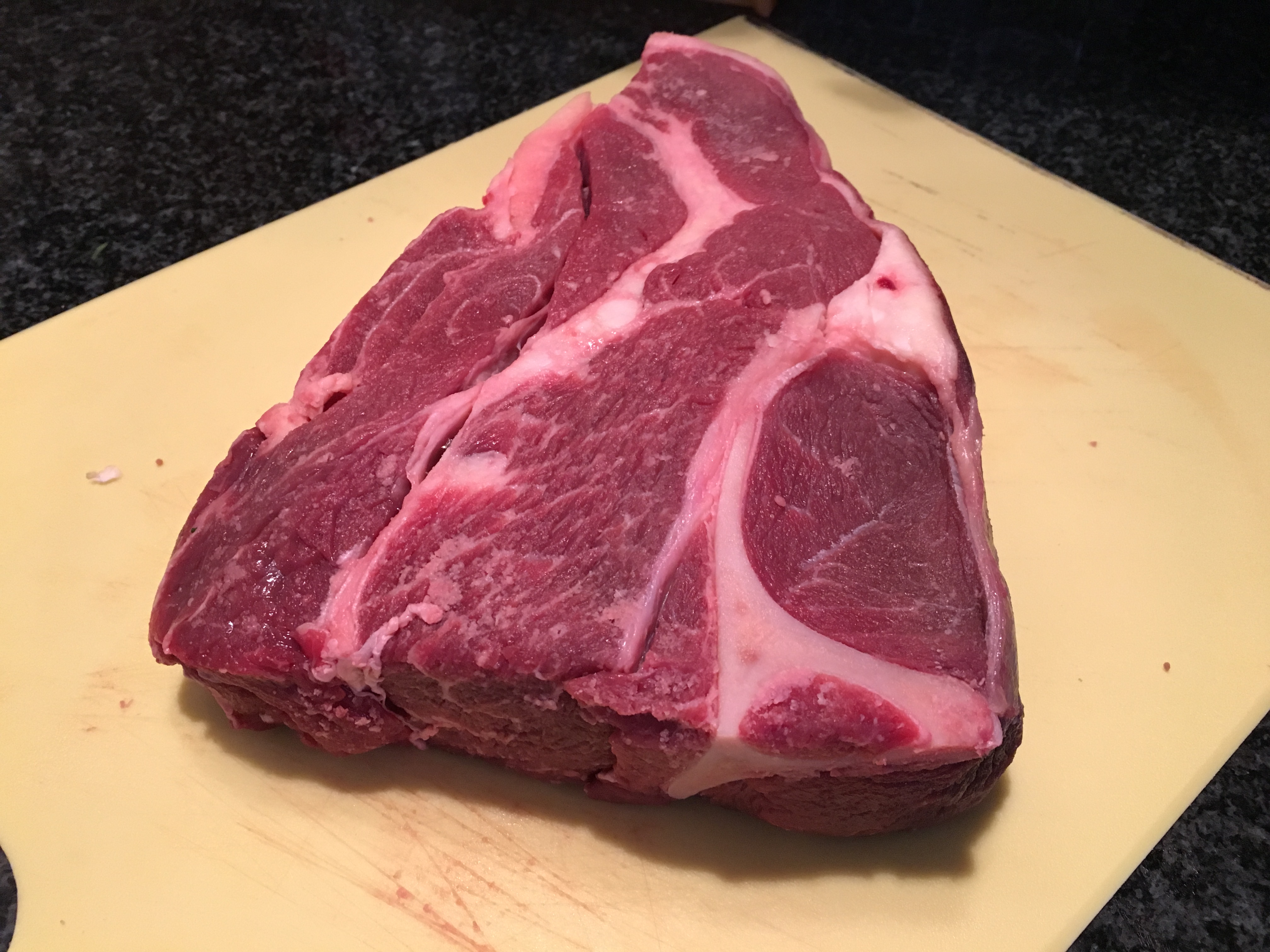
Lindsay Mattison
The reason that beef brisket tastes so delicious (when cooked properly) is because it's smoked for a very long time before being steamed to finish. The smoke infuses flavor into the beef and the low-and-slow cooking allows the tough muscle fibers to relax over a ten or twelve hour period of time. That final steam juices everything up, hydrating the meat so it can't dry out.
In theory, this cooking method should work the same for the beef chuck roll. Beef chuck is a large subprimal from shoulder section of a steer, close to the shoulder clod. The chuck eye roll is cut out of this subprimal and it consists of a tender section from the same muscle that gives us ribeye steaks. Unfortunately, this tender section is also surrounded by a lot of connective tissue, which can make it taste tough.
This is very similar to a brisket - lots of connective tissue. So, in theory, you should be able to cook both cuts of meat in a similar fashion.
The Method
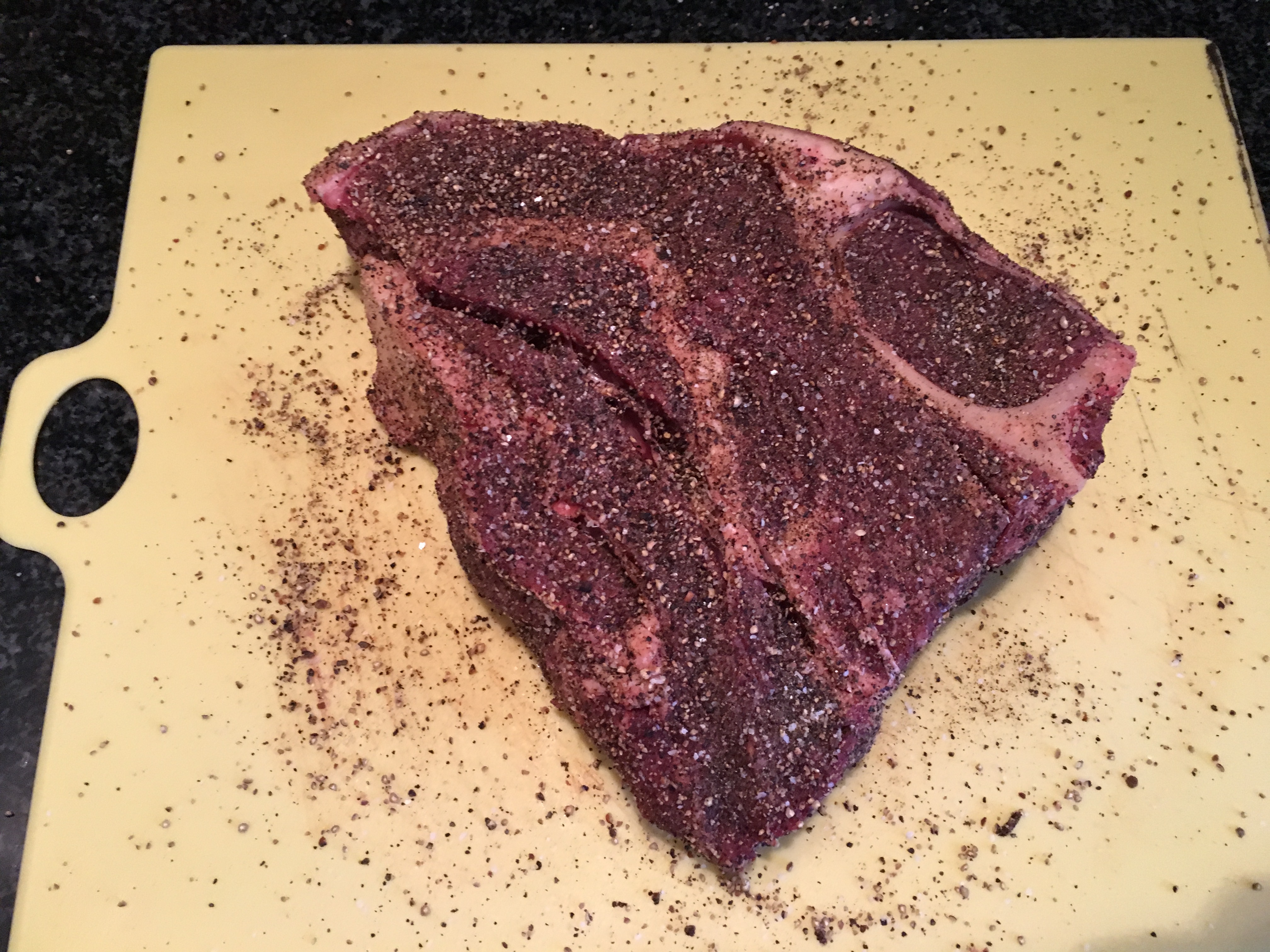
Lindsay Mattison
I started with a 3-pound chuck steak with a small bone section running through it. To start, I coated it with a healthy layer of kosher salt and black pepper. I didn't add any more spices to the rub because my friend raises really high-quality grass-fed beef. So, I wanted to be able to taste the flavor of the beef itself.
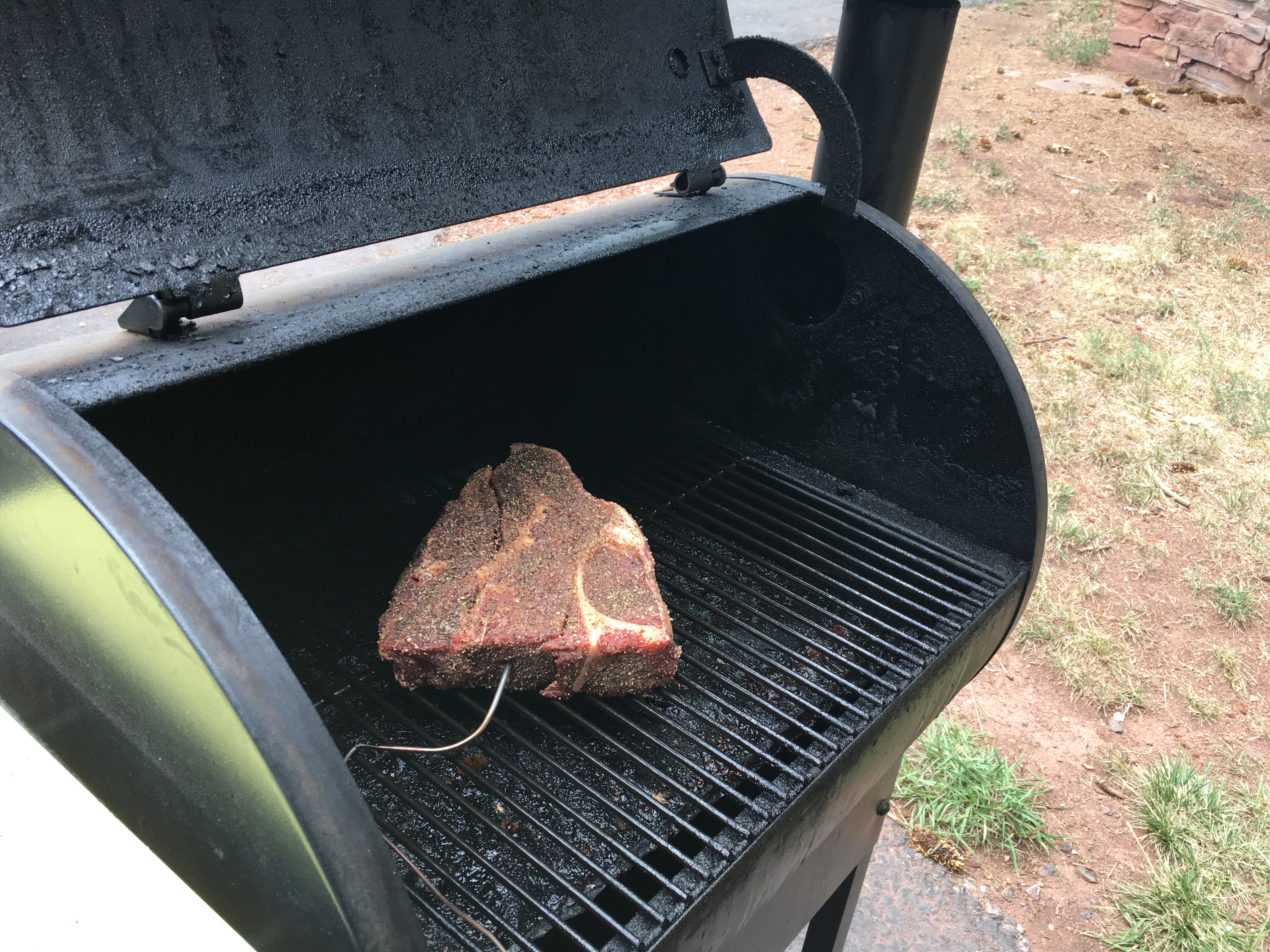
Lindsay Mattison
After letting the roast come to room temperature for an hour, I placed it on a 275-degree smoker. I have a Traeger at home, which is nice and easy to use. You just set it and forget it! I used applewood because it's nice and mild with a subtly sweet and fruity flavor.
I set the instant-read meat thermometer and went back inside to watch some football. Ahem, I mean clean my house. Of course, I was doing something really productive that day!
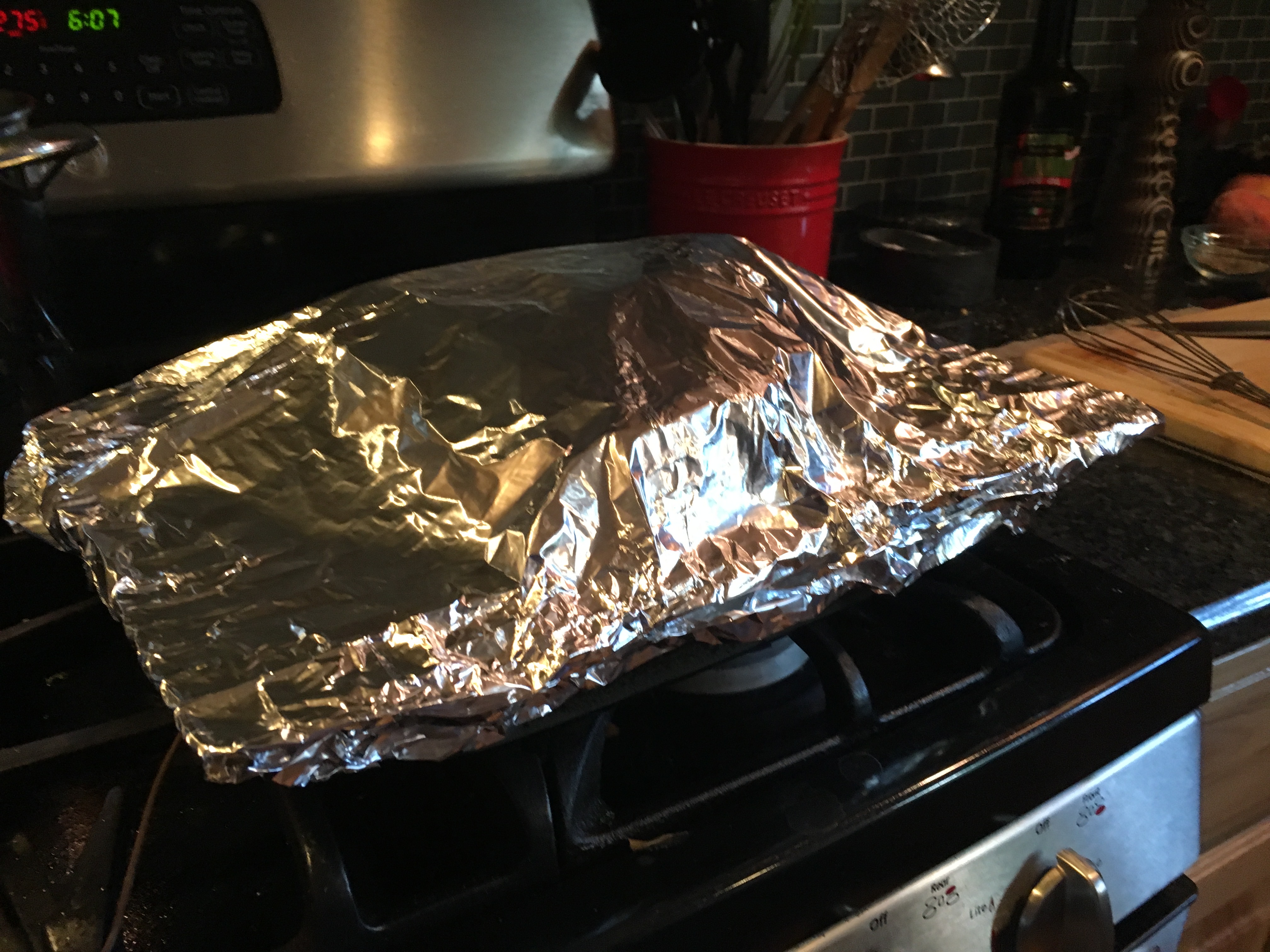
Lindsay Mattison
When the internal temperature hit 150 degrees F (about 5 hours later), I brought the smoked chuck roast inside. I wanted to steam it to finish cooking it with lots of moisture, so I placed it on an oven-safe rack over a 13x9 casserole dish.
I filled the dish with a can of beer (because beer makes everything better) and tightly covered it with aluminum foil. Into a 275 degree F oven it went to finish cooking.
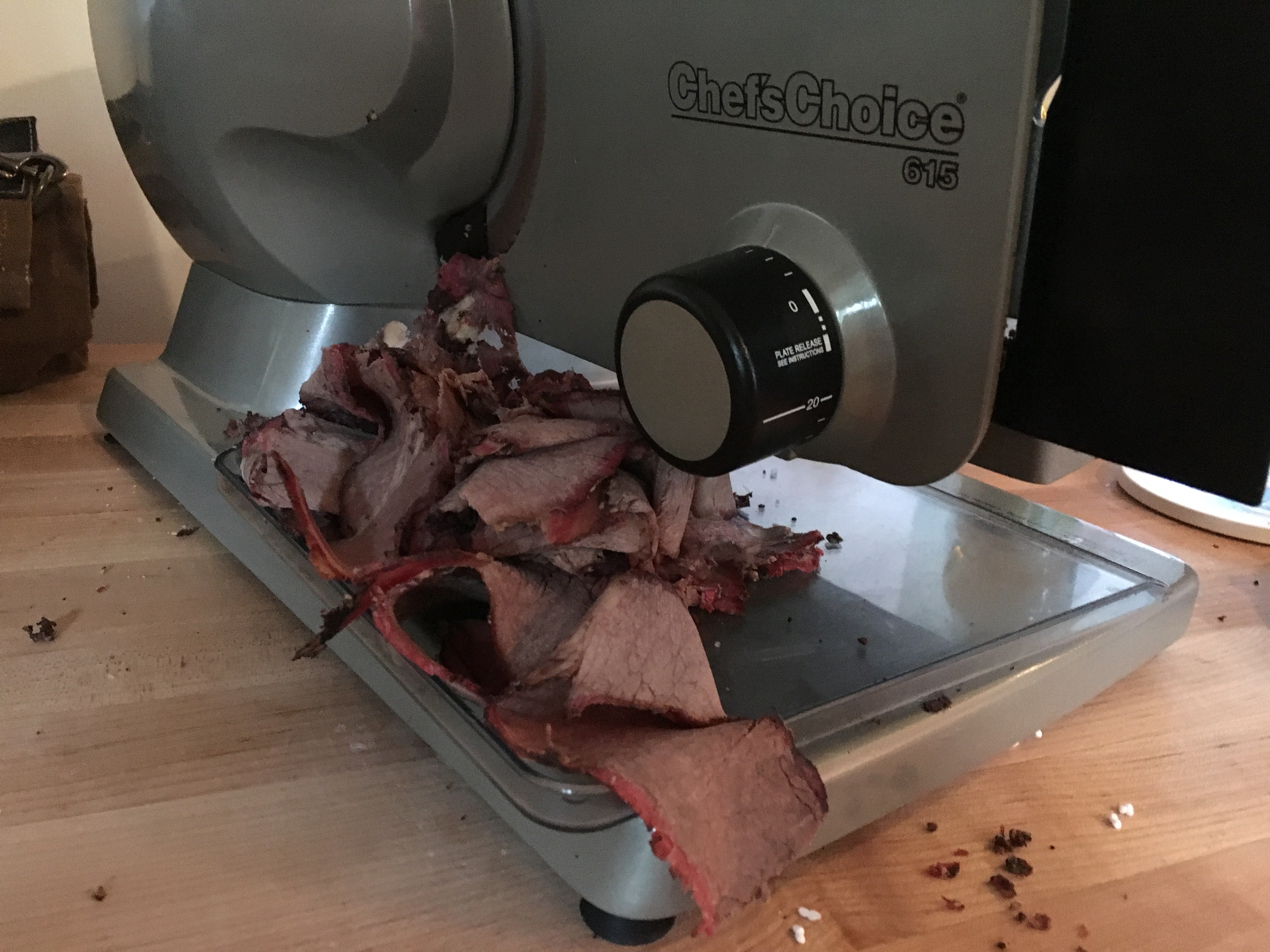
Lindsay Mattison
After another 6 hours of low-and-slow cooking (and more productive active waiting on my part, I'm sure), the chuck roll was finally tender. I let it cool completely in the refrigerator and saved the braising liquid for later.
The next day, I sliced it very thinly on the meat slicer. I'm one of those crazy people who has lots of extra appliances, so I totally have a meat slicer at home. If you don't have one, you can totally slice it by hand.
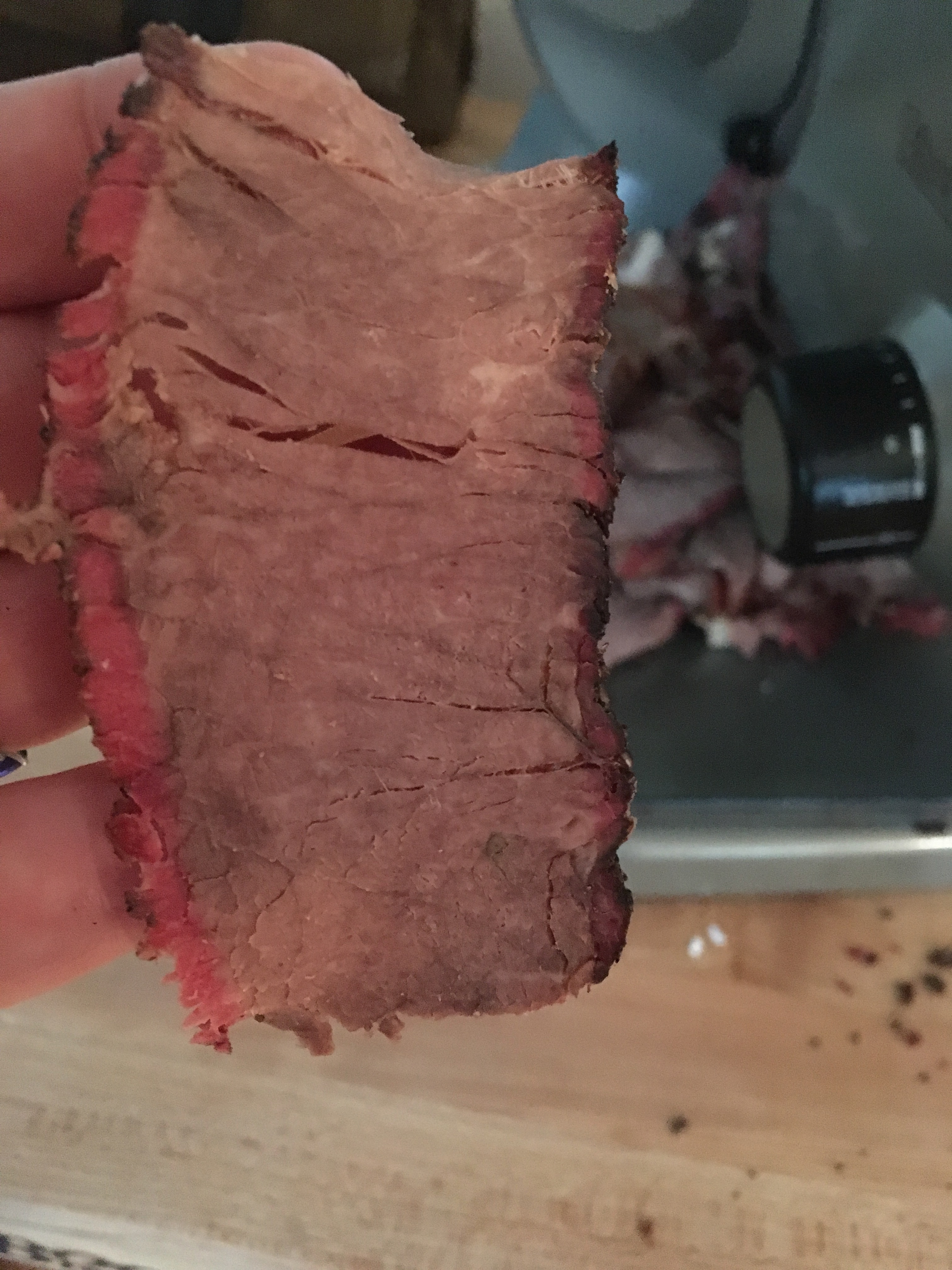
Lindsay Mattison
The slices were ready to reheat in the braising liquid. From here, you can make tacos, a tasty sandwich, or eat them on a salad. Anywhere you would use a steak, use this smoked chuck roll instead!
Did It Work?
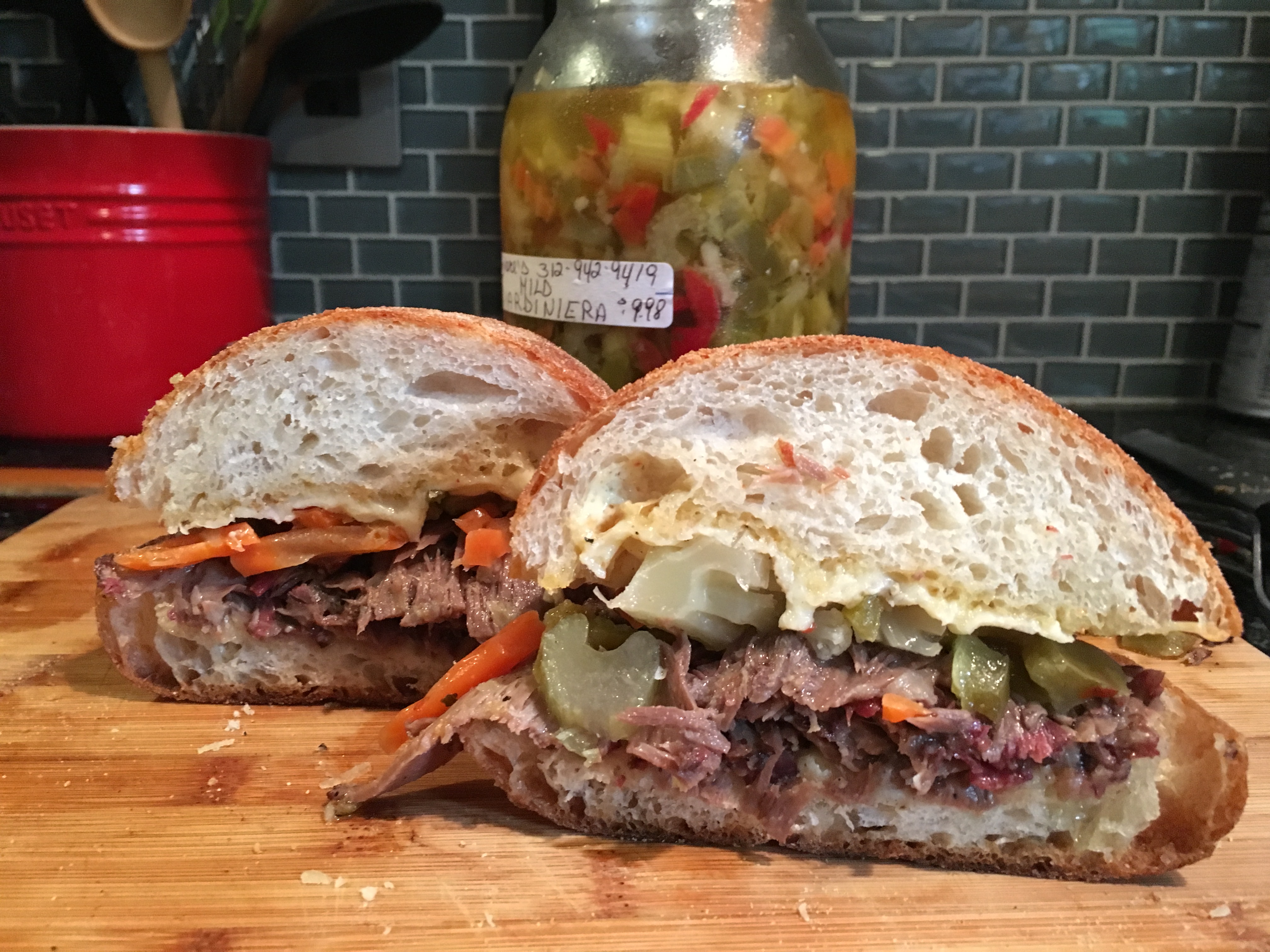
Lindsay Mattison
Not only did it work, but it was brilliant! The brisket used to be an economical cut until it became mainstream and popular. The chuck roll, on the other hand, is still very affordable. I happened to get my chuck roll for free, but in general, it's a very inexpensive cut.
As far as timing goes, the chuck roll took about 10 hours to cook fully (similar to the 10 or 12 hours I usually spend on a brisket). It was just as juicy and beefy tasting as the brisket, and it had an added bonus when it came to yield. There are a lot of fatty pieces on the brisket and I end up throwing a lot of it away. The beef chuck roll is a lot leaner, so almost 100 percent of it was usable.
In the end, I was able to transform a super tough cut of meat into a delicious beef sandwich with very little active effort, so I'd say that's a win. It didn't even make sense to drench the slices in barbecue sauce - it had so much flavor on its own, I really wanted to enjoy the flavors on their own. I did plop on a bunch of giardiniera on my sandwich (Italian beef style) because it sounded too good to pass up.
So, what do you think of the experiment? Would you be willing to try out a beef chuck roll instead of a brisket for your next backyard barbecue?
This post was originally published on January 24, 2018.
